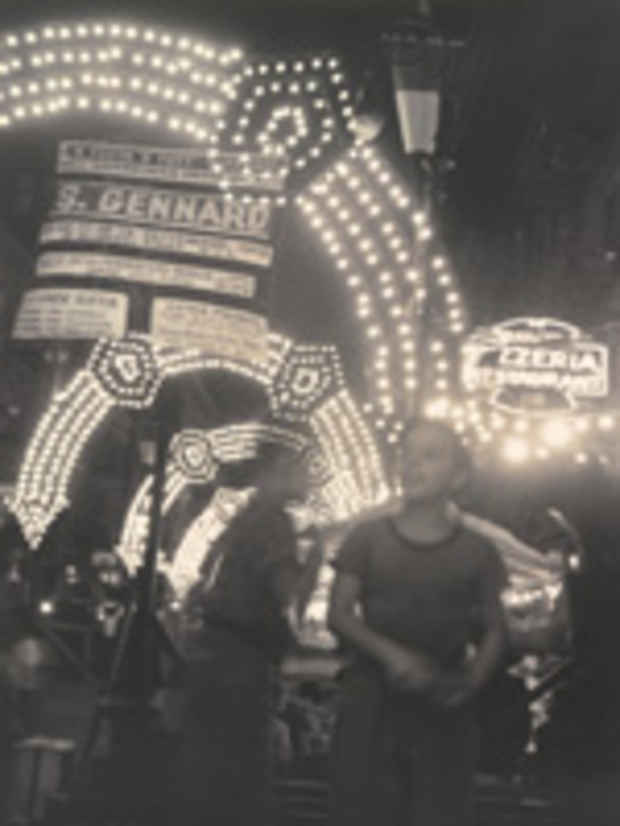"Night Vision: Photography After Dark" Exhibition
The Metropolitan Museum of Art

This event has ended.
At the turn of the last century, night photography came into its own as an artistic genre. In the early years of the medium, capturing images under low-light conditions was nearly impossible, but by the early twentieth century, faster films, portable cameras, and commercial flashbulbs freed artists to explore the graphic universe of shimmering light and velvety darkness that reveals itself in the hours between dusk and dawn. Modern camera artists were captivated by the many moods of electric light: the softly shining globes of street lamps, glittering skyscraper façades, dazzling neon signs, the intimate chiaroscuro of lamplit rooms. Night photographers were also particularly fond of rain, snow, ice, and fog—for both aesthetic and practical reasons. Wet pavement and rising mist can lend pictures an atmosphere of lush poetic reverie; they also reflect and diffuse the available light, shortening exposure times.
In the 1930s, inspired by the pioneering work of Brassaï in Paris and Bill Brandt in London, photographers began to turn their attention to the social life of the city at night, from the convivial hubbub of Little Italy's Feast of San Gennaro to the top-hatted elegance of opening night at the opera. Others were drawn to the gritty underworld of nocturnal outlaws or to lone figures on the margins, picturing the night as a shadowy realm of pleasure, danger, and transgression. More recently, artists have delved even deeper, adapting techniques of police and military surveillance (hidden cameras, searchlights, infrared film) to pry into hidden corners of the night, driven by an ageless desire to make darkness visible.
This installation surveys the ways in which modern photographers have used the camera to explore the visual and symbolic potential of the nocturnal image. Among the featured works are moody Pictorialist nocturnes by Edward Steichen and Alvin Langdon Coburn; shadowy street scenes by Brassaï, Bill Brandt, and Robert Frank; electric light abstractions by Italian Futurist Giuseppe Albergamo; and aerial views of suburban Los Angeles at night by contemporary artist David Deutsch. Drawn entirely from the Metropolitan's collection, the installation includes approximately forty photographs, ranging from the late 1890s to the present.
[Image: Sid Grossman (American, 1913–1955). "Mulberry Street" (detail), (1948) Gelatin silver print; 33.7 x 26.5 cm (13 1/4 x 10 7/16 in.). The Metropolitan Museum of Art, New York, Purchase, The Horace W. Goldsmith Foundation Gift, through Joyce and Robert Menschel, 1990 (1990.1139.2)
Media
Schedule
from April 26, 2011 to September 18, 2011